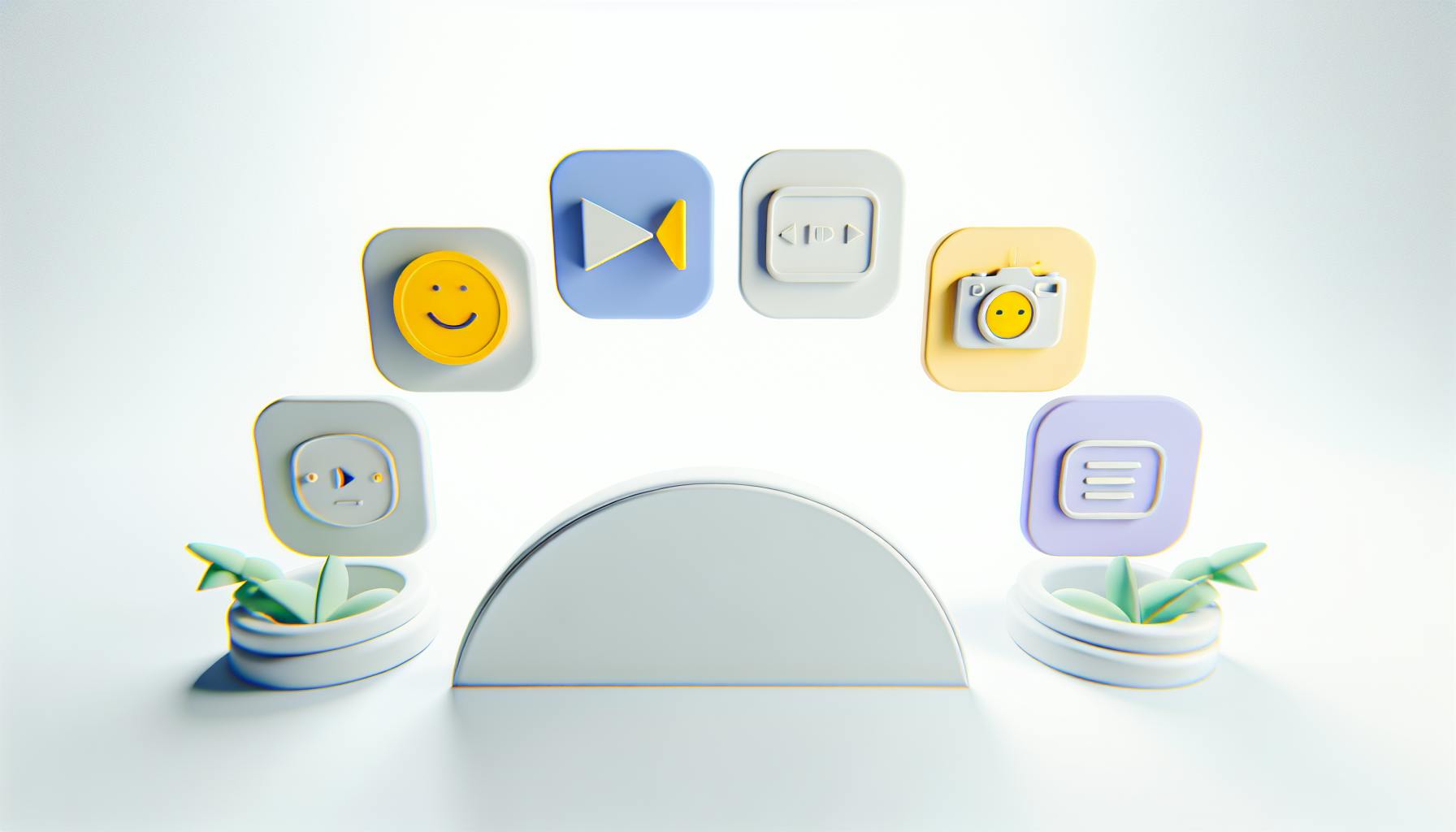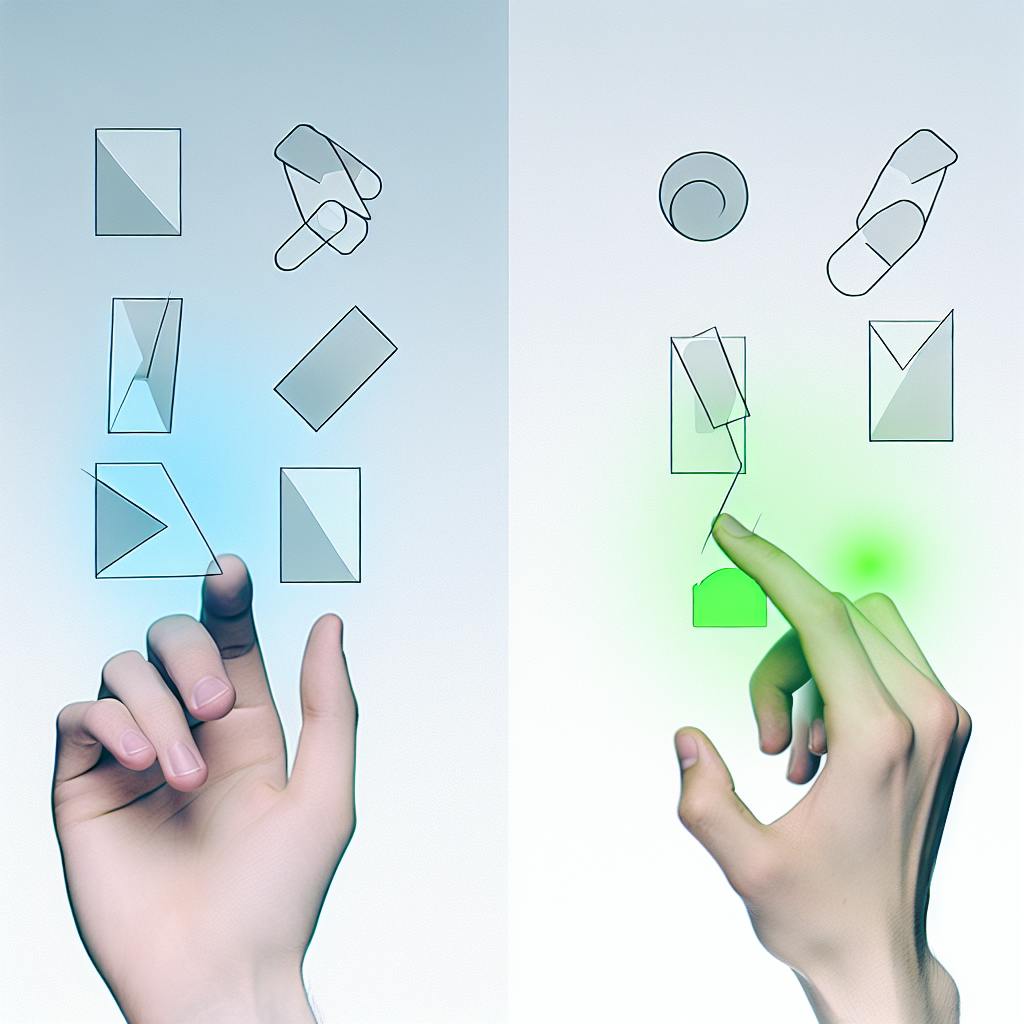Choosing the right in-app ad model is crucial for app developers who want to earn revenue while maintaining a great user experience. Here's a quick overview of the five main types of in-app ads, each with its own set of advantages and best practices:
Understanding your app's genre, audience, and your own revenue goals can help you select the most appropriate ad model. Balancing revenue generation with user experience is key to maintaining a positive and engaging app environment. Below is a quick comparison to help you decide which ad model might be best for your app.
Quick Comparison
Ad ModelUser EngagementRevenue PotentialUser Experience ImpactBanner AdsLowLowMinimalInterstitial AdsMediumHighSignificantRewarded Video AdsHighMediumPositiveNative AdsHighMediumMinimalOffer WallsHighHighVariable
Choosing the right ad models requires balancing these factors to ensure both profitability and user satisfaction.
The Importance of In-App Ads
Here's why in-app ads are a big deal:
How In-App Advertising Works
In-app advertising involves a few key players:
Here's how it goes down:
This setup lets app makers keep making great apps, advertisers reach the right people, and us enjoy free or cheap apps.
In-App Ad Formats
There are a bunch of different ads app makers can use:
Choosing the right type of ad is about finding a balance. App makers need to make money, but they don't want to bug us too much. Trying out different ads to see what works best is a smart move.
In-app ads are a big part of why we can use so many apps for free or cheap. Understanding how these ads work and picking the right ones can help app makers keep their apps going strong.
Comparative Analysis of In-App Ad Models
1. Banner Ads
Description
Banner ads are simple ads that look like rectangles. You can find them at the top or bottom of the screen when you're using an app. They're pretty common and don't move around as you scroll through the app.
Advantages & Disadvantages
Advantages
Disadvantages
Best Practices
2. Interstitial Ads
Description
Interstitial ads are big ads that take up your whole screen. They pop up when you're moving from one part of an app to another, like finishing a level in a game. These ads usually last between 5 to 30 seconds and have a button you can press to close them sooner. They're meant to grab your attention because they're so big and you can't miss them.
Advantages & Disadvantages
Advantages
Disadvantages
Best Practices
3. Rewarded Video Ads
Description
Rewarded video ads are short videos that users can choose to watch to get something nice in the app, like extra game lives or special content. It's like trading a bit of your time to watch an ad for a fun bonus in the app.
Advantages & Disadvantages
Advantages
Disadvantages
Best Practices
4. Native Ads
Description
Native ads are ads that look like they belong in the app. They fit in with the app's design and content, so they don't stick out as much. You might see them as sponsored posts or suggestions that look like part of the app you're using.
Advantages & Disadvantages
Advantages
Disadvantages
Best Practices
5. Offer Walls
Description
Offer walls are special pages in an app where you can see lots of different deals or tasks you can do to earn rewards. For example, you might download a new app or answer some survey questions to get free game coins or extra tries in the game you're playing. These offers come from brands that work with the app developer.
When you complete an offer, you get a reward. This setup helps app makers earn more money and gives you more fun things to do in the app.
Advantages & Disadvantages
Advantages
Disadvantages
Best Practices
Choosing the Right Ad Model for Your App
When deciding how to make money from your mobile app with ads, think about a few important things:
Your App Genre and Audience
What your app does and who uses it should help you pick the best ad model.
Think about your users - what they like, how much they'll put up with ads, and what rewards they'd want.
Revenue Goals vs. User Experience
You need to balance making money with keeping your app nice to use.
Remember, if users get something in return for watching ads, they might not mind them as much.
Costs and Capabilities
Also, think about what you can afford, what you can do, and who you can work with.
Thinking about these things will help you choose the right ads for your app. Don't forget to try different things and see what works best!
sbb-itb-8abf120
Pros and Cons
Let's look at the good and bad sides of different types of ads you might see in apps:
Ad ModelAdvantagesDisadvantagesBanner Ads- Not too pushy
- Cheap to make
- Easy to start with- Easy to overlook
- Not much space for info
- Not many people click on themInterstitial Ads- Really catches your eye
- Makes people pay attention
- More people click on them- Can get in the way
- Might make users unhappy
- Costs moreRewarded Video Ads- Fun to watch
- You get to choose to watch
- Keeps you interested- Takes more work to set up
- Have to make sure rewards are worth itNative Ads- More people click on them
- Doesn't interrupt as much
- Helps people remember brands- Expensive to create
- Not as many places to put them
- Might seem sneakyOffer Walls- Makes the app more fun
- Shows off other apps
- Gives you bonuses- Can interrupt your app time
- Hard to make sure offers are good
- Might not grab your attention
As you can see, each type of ad has its own set of good and bad points.
Banner ads are easy and cheap but might not get noticed much. Big ads that cover your screen can really make you look, but they might also annoy you if there are too many.
Ads where you watch a video to get a reward and walls with offers can make the app more fun, but they need more effort to get right. Ads that look like they're part of the app are less annoying but cost more to make.
Figuring out the best kind of ad for your app means looking at these good and bad points. Trying different types of ads is a good way to find out what works best without making your users unhappy.
The best plan usually mixes a few different kinds of ads. You can balance things out - like using offer walls and rewarded ads to make up for more annoying ads.
Always watch how your users react and change your ad types and how often they show up. With the right approach, ads can make good money without ruining the app experience.
Conclusion
Putting ads in your app is a smart way to make some money while keeping your app free or cheap for users. But, if you don't do it right, ads can annoy your users. It's all about finding the right balance between making money and keeping your app fun to use.
Key takeaways when choosing an ad model:
Best practices for integrating ads:
In the end, take your time to figure out the best way to show ads in your app. Mix different types of ads, control how often they show up, and make sure users can interact with them easily. Keep testing and adjusting to find the best balance. You want to make money, but not at the cost of losing your users.
Related Questions
What are the different types of in-app ads?
There are a few common types of ads you might see in apps:
Each type has its own ups and downs when it comes to how much they're noticed, how they affect the user's experience, and how much money they can make. Trying out different kinds can help you find what works best.
What are popular advertising models?
Two common advertising models are:
These models help shape how ads talk to potential customers and guide them towards buying something.
What is IAA in marketing?
IAA stands for the International Advertising Association. It's a big group that includes companies and people from all over the advertising world, like agencies, marketers, and media companies.
What is the revenue of in-app ad?
How much money you make from in-app ads depends on a few things:
To figure out how much you might earn, you can:
Trying different types of ads and how often they show up can help you make more money.








